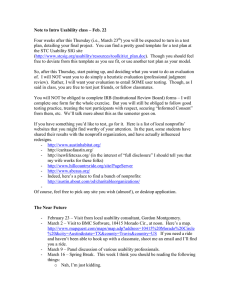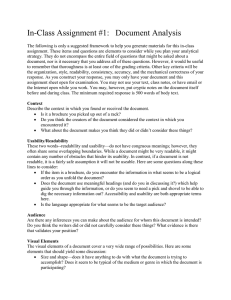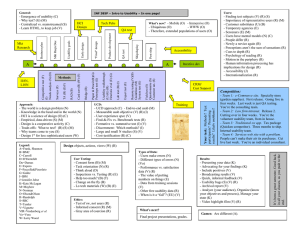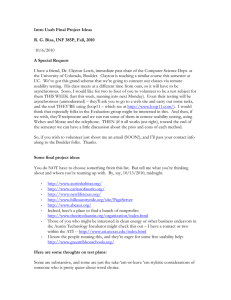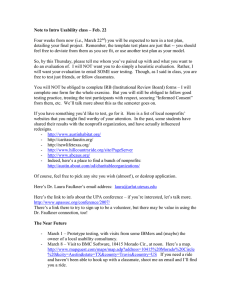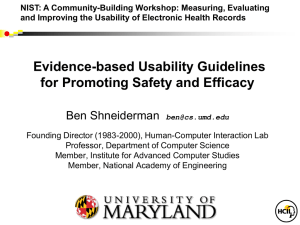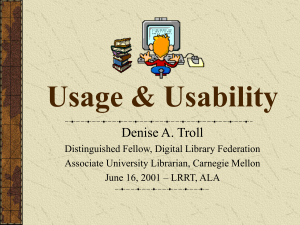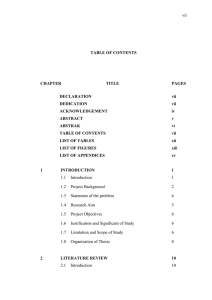Document 13900643
advertisement
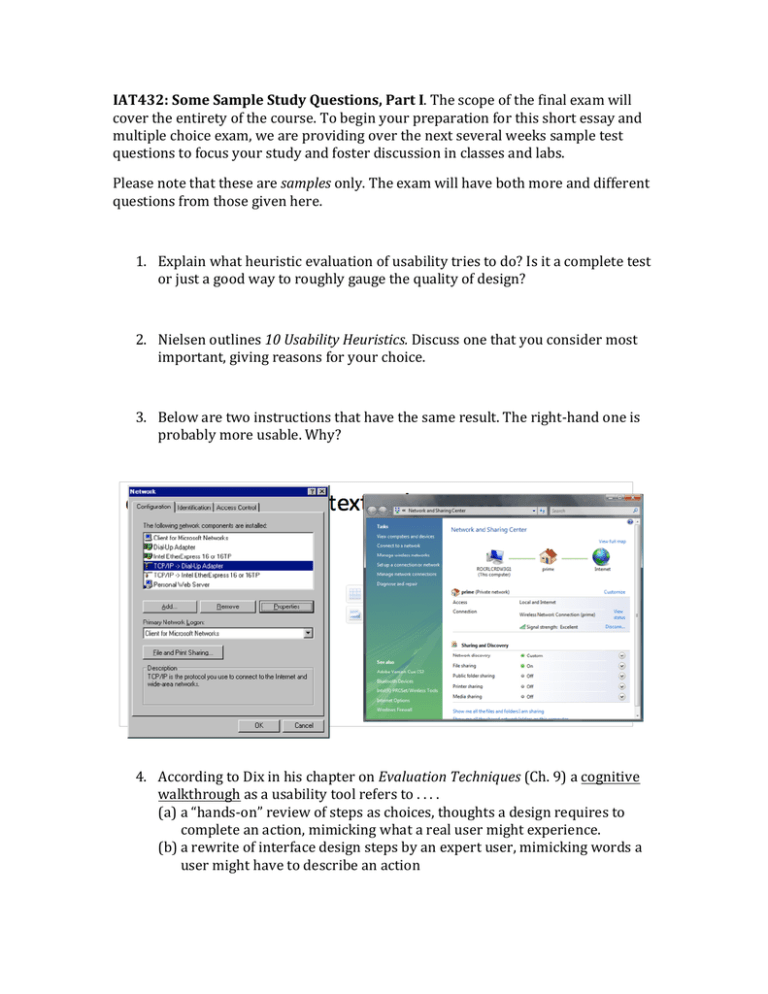
IAT432: Some Sample Study Questions, Part I. The scope of the final exam will cover the entirety of the course. To begin your preparation for this short essay and multiple choice exam, we are providing over the next several weeks sample test questions to focus your study and foster discussion in classes and labs. Please note that these are samples only. The exam will have both more and different questions from those given here. 1. Explain what heuristic evaluation of usability tries to do? Is it a complete test or just a good way to roughly gauge the quality of design? 2. Nielsen outlines 10 Usability Heuristics. Discuss one that you consider most important, giving reasons for your choice. 3. Below are two instructions that have the same result. The right-­‐hand one is probably more usable. Why? 4. According to Dix in his chapter on Evaluation Techniques (Ch. 9) a cognitive walkthrough as a usability tool refers to . . . . (a) a “hands-­‐on” review of steps as choices, thoughts a design requires to complete an action, mimicking what a real user might experience. (b) a rewrite of interface design steps by an expert user, mimicking words a user might have to describe an action 5. 6. 7. 8. (c) a test of web interfaces by a large sample of randomly chosen people, looking for the errors and mistakes they make. (d) a computer game where deliberately misleading directions are given to test subjects finding a prize in a virtual building. (e) All of the above In software design, wizards are . . . . (a) complex actions broken up into smaller steps guiding novice users to the desired outcome, combining both instruction and command steps in sequence. (b) experts one calls by phoning a software company for help. (c) error messages that identify the code and command faults for programmers. (d) what Apple Store employees are called at the stores’ “genius bar”. (e) usability testing firms that refine and improve faulty computer software. Nielson’s “thinking aloud” system is used to . . . (a) write better instruction manuals for complex machinery and software (b) measuring users’ problems and blocks in using new software (c) counting the number and intensity of bad comments and cursing one uses in trying out new designs. (d) A free association exercise where random computer users imagine their perfect “dream machine”. (e) Follow consumers through a store recording their comments on competing brands of computer software and hardware. In a “depth” interview, the questioner really is seeking what kind of information? In a questionnaire, what kind of items should one put first up? 9. Give an example of a Likert questionnaire item. What is its best feature? 10. Contrast a structured v. an unstructured interview. What is one positive and one negative feature of each type? Give an example of the question from each type.

